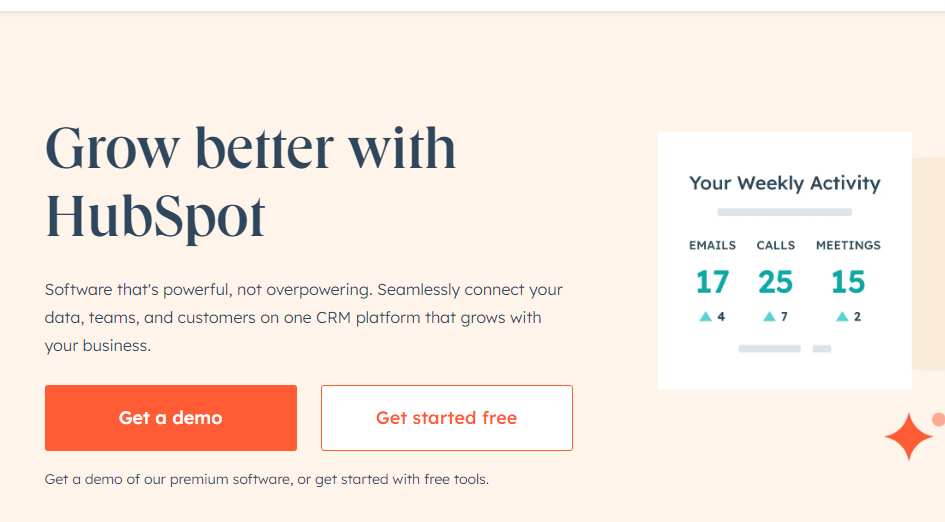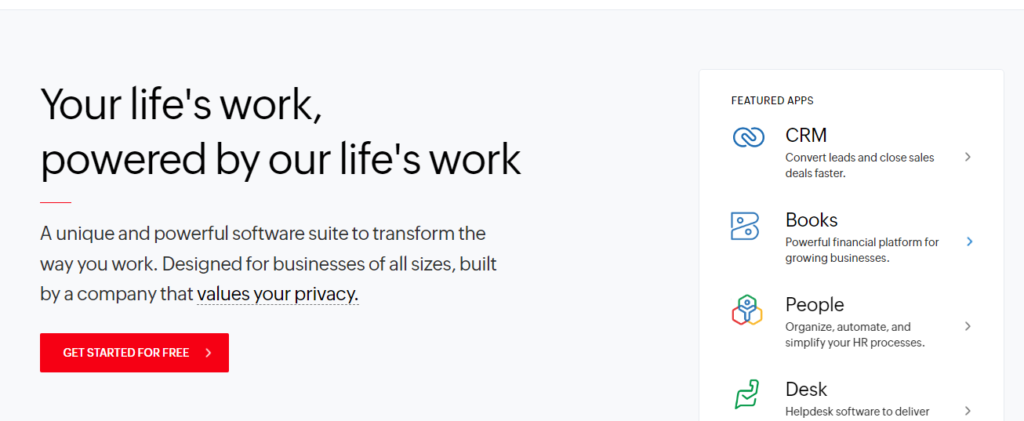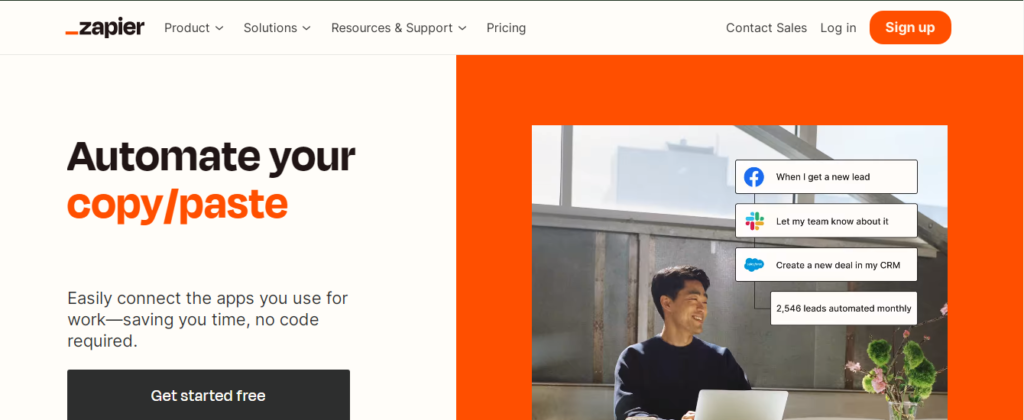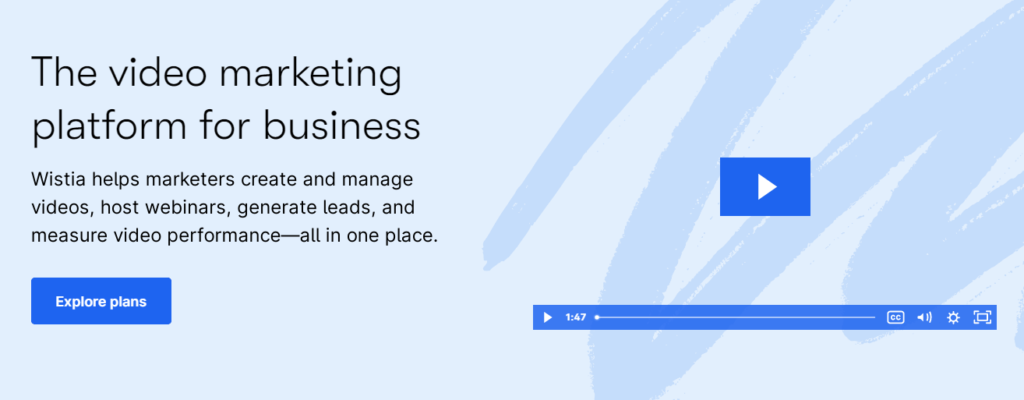SaaS Marketing campaigns play an integral role in spurring user adoption, amplifying customer engagement, and ultimately skyrocketing revenue for SaaS enterprises. In this blog post, we’ll delve into the immense power of captivating SaaS marketing campaigns and the invaluable lessons they impart.
Unleashing the Power of Captivating SaaS Marketing Campaigns
Before delving into specific examples, let’s grasp why marketing campaigns hold such immense significance for SaaS companies. A masterfully executed campaign possesses the potential to yield remarkable benefits, including:
Escalated Brand Awareness: SaaS startups often grapple with the challenge of differentiating themselves in a crowded marketplace. A captivating marketing campaign aids in establishing brand recognition and propels your product to the forefront of potential customer’s minds.
Lead Generation and Customer Acquisition: Effective campaigns magnetize qualified leads, resulting in a heightened conversion rate and an expanded customer base. By effectively reaching the right audience with precisely tailored messages, SaaS enterprises can drive an influx of sign-ups and subscriptions.
Enhanced User Engagement and Retention: Marketing campaigns go beyond merely acquiring new customers; they also play a pivotal role in captivating existing users. Campaigns that deliver value and strike a chord with customers have the power to foster loyalty and promote retention.
Stimulated Revenue Growth: Ultimately, the success of a SaaS business is measured by its revenue. A meticulously crafted marketing campaign possesses the potential to directly impact the bottom line by propelling conversions, upsells, and cross-sells.
To emphasize the significance of marketing campaigns in the SaaS industry, let’s take a look at some compelling statistics:
- According to a survey conducted by HubSpot, 69% of SaaS companies say converting leads into customers is their top marketing priority.
- A study by Gartner found that companies that implement effective lead nurturing campaigns generate 50% more sales-ready leads at a 33% lower cost per lead.
- Salesforce’s State of Marketing report revealed that high-performing marketing teams are more than twice as likely to use customer journey mapping and campaign analytics.
HubSpot’s “Inbound Marketing”

HubSpot, a leading provider of inbound marketing software, launched a groundbreaking marketing campaign known as “Inbound Marketing.” The campaign aimed to disrupt traditional outbound marketing methods and educate businesses on the power of inbound marketing strategies. HubSpot’s objectives were to increase brand awareness, generate leads, and position themselves as thought leaders in the marketing industry.
Strategy and Tactics Used
HubSpot’s “Inbound Marketing” campaign utilized a multi-faceted approach to achieve its goals:
- Content Creation: HubSpot focused on creating valuable, educational content that resonated with their target audience. They produced blog articles, e-books, webinars, and video tutorials covering various aspects of inbound marketing, such as SEO, social media, and lead generation. This content not only attracted potential customers but also established HubSpot as a go-to resource for marketing knowledge.
- Thought Leadership: HubSpot leveraged its internal expertise to position its team members as thought leaders in the industry. They regularly published guest posts on influential marketing blogs and actively participated in industry conferences and events. This helped to build trust, credibility, and authority around the HubSpot brand.
- Free Tools and Resources: As part of their campaign, HubSpot offered free marketing tools and resources to entice potential customers. They provided tools for keyword research, social media analytics, and lead capture forms, allowing businesses to experience the value of HubSpot’s offerings firsthand.
- Lead Nurturing: HubSpot implemented a comprehensive lead nurturing strategy to guide potential customers through their buyer’s journey. They employed personalized email marketing campaigns, drip sequences, and targeted content offers to engage and educate leads at each stage of the funnel. By delivering relevant content to the right audience, HubSpot was able to nurture leads and drive conversions effectively.
Results and Key Takeaways
HubSpot’s “Inbound Marketing” campaign yielded impressive results and valuable lessons for SaaS marketers:
- The campaign helped HubSpot establish itself as a leader in the inbound marketing space, leading to a substantial increase in brand awareness and industry recognition.
- The content created during the campaign generated a significant influx of leads, with a conversion rate that surpassed industry benchmarks.
- HubSpot’s thought leadership efforts resulted in increased trust and credibility among their target audience, leading to higher customer acquisition and retention rates.
- The provision of free tools and resources helped HubSpot showcase the value of their software and attract potential customers who later converted into paying customers.
- The comprehensive lead nurturing strategy employed by HubSpot ensured that leads received relevant and timely content, resulting in higher engagement and conversion rates.
Key Takeaways:
- Producing valuable and educational content positions a SaaS company as an industry authority and attracts potential customers.
- Establishing thought leadership through guest blogging and participation in industry events enhances brand credibility and trust.
- Offering free tools and resources allows potential customers to experience the value of the product, increasing the likelihood of conversion.
- Implementing a personalized lead nurturing strategy ensures that leads receive relevant content and increases the chances of driving conversions.
2: Zoho’s Referral SaaS Marketing Campaign
Zoho, a leading provider of cloud-based business software, launched a highly successful referral campaign to leverage the power of word-of-mouth marketing and drive customer acquisition. The objective of the campaign was to encourage existing customers to refer new customers to Zoho’s suite of products and incentivize them for their referrals. The campaign aimed to increase customer acquisition, improve customer loyalty, and expand the reach of Zoho’s software solutions.
Strategy and Tactics Used
Zoho’s referral campaign utilized a variety of strategies and tactics to achieve its objectives:
- Clear Incentives: Zoho offered attractive incentives to customers who referred new customers. These incentives included discounts on subscription fees, extended trial periods, exclusive access to premium features, or even monetary rewards. By providing valuable incentives, Zoho motivated customers to actively participate in the referral program.
- Seamless Referral Process: Zoho made it effortless for customers to refer others by streamlining the referral process. They provided customers with personalized referral links or codes that could be easily shared through email, social media, or direct messaging. Zoho also ensured that the referral tracking and reward fulfillment processes were smooth and transparent.
- Customer Advocacy: Zoho actively engaged with customers who participated in the referral program, acknowledging and celebrating their contributions. They showcased success stories of customers who referred new users and highlighted their achievements through social media, blog posts, or dedicated case studies. By recognizing customer advocacy, Zoho encouraged more customers to participate in the referral program.
- Promotional Campaign: Zoho promoted the referral campaign through various marketing channels, including email newsletters, social media posts, and targeted advertisements. They emphasized the benefits of Zoho’s products, the referral incentives, and the ease of participation. This created awareness among the existing customer base and encouraged them to refer others.
Results and Key Takeaways
Zoho’s referral campaign yielded impressive results and provided valuable insights for SaaS marketers:
- The referral campaign significantly contributed to Zoho’s customer acquisition efforts, resulting in a notable increase in new customers and revenue.
- Existing customers became brand advocates, actively promoting Zoho’s products and services to their network, which enhanced Zoho’s reputation and credibility.
- The campaign improved customer loyalty and retention rates, as customers felt incentivized to continue using Zoho’s products and refer others.
- The seamless referral process and clear incentives played a vital role in motivating customers to participate in the program and refer new customers.
- Customer advocacy and recognition helped foster a sense of community and loyalty among Zoho’s customer base.
Key Takeaways:
- Incentivizing customers with valuable rewards can significantly boost customer acquisition through referrals.
- Simplifying the referral process and ensuring transparency in tracking and reward fulfillment enhances the overall customer experience.
- Promoting the referral campaign through various marketing channels amplifies its reach and encourages customer participation.
- Recognizing and celebrating customer advocates creates a sense of community and deepens customer loyalty.
3: Zapier’s SEO Campaign
Zapier, a popular platform that enables users to automate workflows between different apps, implemented a successful SEO campaign to increase organic visibility and drive targeted traffic to their website. The objective of the campaign was to improve Zapier’s search engine rankings, attract relevant users searching for automation solutions, and ultimately increase sign-ups and user engagement.
Strategy and Tactics Used
Zapier’s SEO campaign utilized various strategies and tactics to achieve its objectives:
- Keyword Research and Optimization: Zapier conducted thorough keyword research to identify relevant search terms and phrases with significant search volumes and lower competition. They optimized their website’s content, including landing pages, blog posts, and product descriptions, by strategically incorporating these keywords to improve their search engine rankings.
- Content Marketing: Zapier invested in a robust content marketing strategy focused on providing valuable and informative content related to automation, productivity, and workflow management. They published blog articles, guides, tutorials, and case studies that addressed common pain points and provided solutions for their target audience. This content not only attracted organic traffic but also positioned Zapier as an authority in the space.
- Link Building: Zapier engaged in a proactive link building campaign to increase the number of high-quality backlinks pointing to their website. They reached out to relevant industry websites, blogs, and influencers to secure guest blogging opportunities, interviews, and mentions. These backlinks helped to improve Zapier’s domain authority and organic search visibility.
- Technical SEO Optimization: Zapier prioritized technical SEO optimization to ensure their website was crawlable, indexable, and user-friendly. They focused on improving website speed, optimizing meta tags, implementing structured data markup, and enhancing mobile responsiveness. These technical improvements not only improved user experience but also positively impacted search engine rankings.
Results and Key Takeaways
Zapier’s SEO campaign yielded impressive results and provided valuable insights for SaaS marketers:
- The campaign significantly improved Zapier’s search engine rankings for targeted keywords, resulting in increased organic visibility and a larger share of organic search traffic.
- The content marketing strategy generated valuable inbound links and increased the overall domain authority of the Zapier website.
- The implementation of technical SEO optimizations improved website performance, resulting in better user experience and higher search engine rankings.
- The campaign helped Zapier attract a highly relevant audience actively searching for automation solutions, resulting in increased sign-ups and user engagement.
- By positioning themselves as a valuable resource through informative content, Zapier established credibility and trust among their target audience.
Key Takeaways:
- Thorough keyword research and optimization are essential for improving search engine rankings and attracting relevant organic traffic.
- A robust content marketing strategy, focused on providing value and addressing user pain points, can drive organic traffic and establish authority.
- Proactive link-building efforts help increase domain authority and improve search visibility.
- Technical SEO optimization is crucial for improving website performance and user experience, leading to higher search engine rankings.
4: Wistia’s Content Marketing Campaign
Wistia, a video marketing software company, implemented a highly successful content marketing campaign to educate, engage, and attract their target audience. The SaaS marketing campaign aimed to position Wistia as a thought leader in the video marketing space, increase brand awareness, and generate leads. The objective was to provide valuable content that addressed the pain points and challenges faced by marketers looking to leverage video in their strategies.
Strategy and Tactics Used
Wistia’s content marketing campaign utilized various strategies and tactics to achieve its objectives:
- Educational Video Content: Wistia focused on creating educational and informative video content that catered to the needs of their target audience. They produced a variety of videos, including tutorials, webinars, case studies, and expert interviews, offering practical advice, best practices, and insights on video marketing strategies. This content not only showcased Wistia’s expertise but also provided value to viewers.
- Engaging Blog Posts: Wistia maintained an active and engaging blog that covered a wide range of video marketing topics. They published articles that addressed common challenges, provided tips and tricks, and shared success stories. The blog posts were well-written, visually appealing, and optimized for search engines, attracting organic traffic and establishing Wistia as a go-to resource for video marketing knowledge.
- Data-Driven Research: Wistia conducted data-driven research on video marketing trends, consumer behavior, and best practices. They presented their findings in visually compelling reports, infographics, and whitepapers, providing valuable insights to their target audience. This data-driven approach not only attracted attention but also helped establish Wistia’s credibility and authority in the industry.
- Community Building: Wistia fostered a sense of community by actively engaging with their audience through social media platforms, comment sections, and dedicated forums. They encouraged discussions, answered questions, and solicited feedback, creating a space where marketers could connect, share ideas, and learn from each other. This community-building effort helped to strengthen brand loyalty and advocacy.
Results and Key Takeaways
Wistia’s SaaS content marketing campaign yielded impressive results and provided valuable insights for SaaS marketers:
- The campaign significantly increased brand awareness and positioned Wistia as a leader in the video marketing space.
- Educational video content and engaging blog posts attracted a wide audience, resulting in increased website traffic and user engagement.
- Data-driven research and valuable insights provided by Wistia’s content helped build credibility and establish trust among their target audience.
- Community-building efforts created a loyal and engaged community, fostering brand advocacy and word-of-mouth promotion.
- The campaign generated a consistent stream of high-quality leads, as marketers sought out Wistia’s software solutions after consuming their valuable content.
Key Takeaways:
- Creating educational and informative content builds trust, establishes thought leadership, and attracts a relevant audience.
- Engaging blog posts and visually appealing content can drive organic traffic and user engagement.
- Data-driven research and insights provide value to the audience and establish credibility in the industry.
- Fostering a community around the content creates brand loyalty and advocacy.
5. TypeForm’s SaaS marketing campaign

TypeForm, a popular online form and survey software, implemented a successful product marketing campaign to drive adoption and showcase the value of their platform. The objective of the campaign was to increase brand awareness, attract new users, and differentiate TypeForm from competitors in the crowded form-building software market. The campaign aimed to highlight the unique features, ease of use, and versatility of the TypeForm platform.
Strategy and Tactics Used in B2B SaaS marketing campaigns
TypeForm’s product marketing campaign utilized various strategies and tactics to achieve its objectives:
- Compelling User Experience: TypeForm focused on creating a user experience that was visually appealing, interactive, and easy to navigate. They emphasized the platform’s intuitive interface, customizable form designs, and seamless user interactions. By providing a delightful user experience, TypeForm aimed to differentiate themselves from other form builders and create a positive brand perception.
- Use Case Demonstrations: TypeForm showcased the versatility of their platform by highlighting real-world use cases across various industries. They created case studies, video testimonials, and blog posts that demonstrated how TypeForm could be utilized for surveys, feedback collection, lead generation, event registrations, and more. These use case demonstrations helped potential users envision how TypeForm could solve their specific needs.
- Educational Resources: TypeForm provided educational resources, including guides, tutorials, and webinars, to help users maximize the potential of their platform. They focused on teaching best practices, advanced features, and strategies for improving form completion rates and user engagement. By empowering users with knowledge, TypeForm encouraged them to explore the platform’s capabilities and become advocates for the product.
- Targeted Advertising and Partnerships: TypeForm leveraged targeted advertising campaigns on platforms like Google Ads and social media to reach their target audience effectively. They also established partnerships with complementary tools and platforms, such as email marketing software or project management tools, to expand their reach and target users who could benefit from integrating TypeForm into their workflows.
Results and Key Takeaways
TypeForm’s product marketing campaign yielded impressive results and provided valuable insights for SaaS marketers:
- The campaign successfully increased brand awareness and differentiated TypeForm from competitors in the form-building software market.
- The emphasis on a compelling user experience helped create a positive brand perception and attract new users.
- Use case demonstrations and real-world examples showcased the versatility of the platform, allowing potential users to envision its application in their own businesses.
- Educational resources empowered users to maximize the potential of the TypeForm platform, resulting in higher user engagement and satisfaction.
- Targeted advertising campaigns and strategic partnerships effectively reached and engaged the target audience, driving user acquisition.
Key Takeaways:
- A compelling user experience can differentiate a product and create a positive brand perception.
- Showcasing real-world use cases and providing examples of how the product solves specific needs helps potential users envision its value.
- Educational resources empower users and encourage them to explore advanced features and best practices.
- Targeted advertising and strategic partnerships can effectively reach and engage the target audience.
Wrapping Up
The world of SaaS marketing is dynamic and ever-evolving, requiring innovative strategies to stand out in a crowded market. Through the exploration of these case studies, we have uncovered valuable insights and learnings from brilliant SaaS marketing campaigns.
From HubSpot’s inbound marketing approach to Zoho’s successful referral SaaS marketing campaigns, we have seen the power of personalized messaging, clear incentives, and seamless user experiences in driving customer acquisition and loyalty. Additionally, the success of Zapier’s SEO campaign showcased the importance of thorough keyword research, valuable content creation, and technical optimization in improving search engine rankings and attracting targeted traffic.
Furthermore, Wistia’s SaaS marketing campaigns demonstrated the significance of educational content, engaging blog posts, data-driven research, and community building in establishing thought leadership, increasing brand awareness, and generating leads. Lastly, TypeForm’s product marketing campaign highlighted the value of a compelling user experience, use case demonstrations, educational resources, and targeted advertising in driving adoption and differentiation.
Get in touch with the Gignaut team today to start measuring and improving your marketing efforts.
Check the B2B SaaS Marketing Handbook to learn more.








